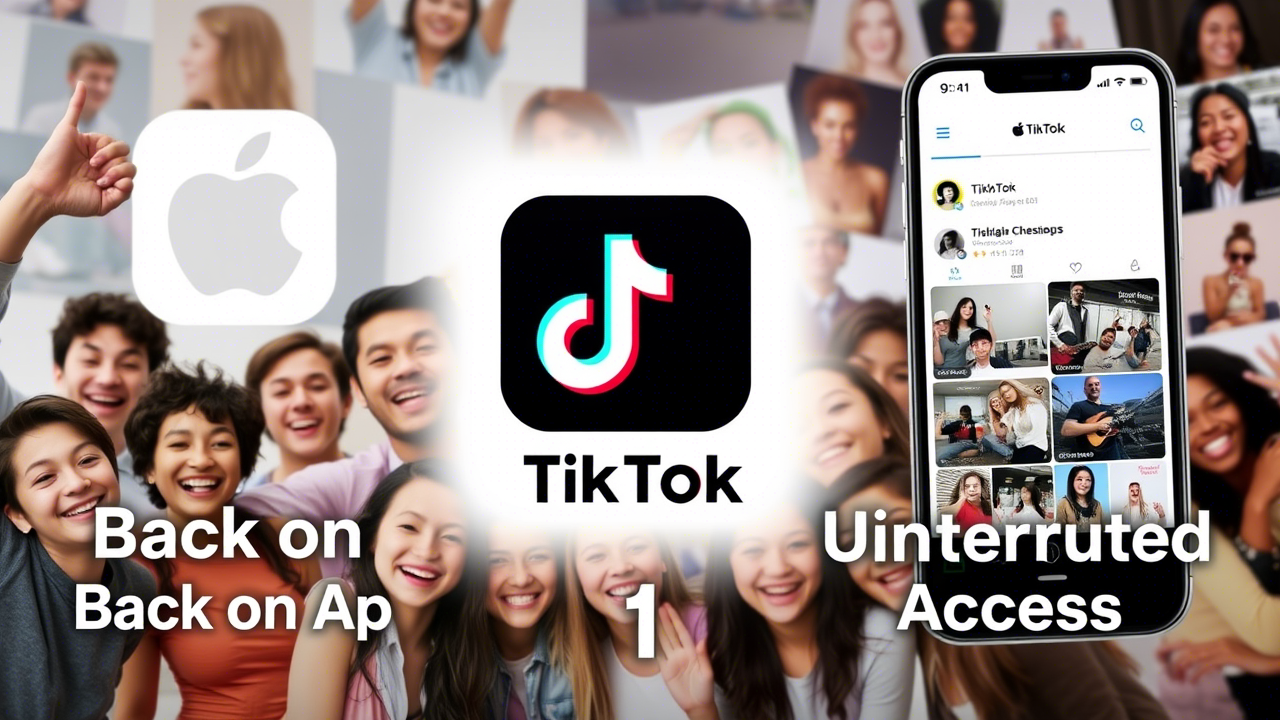After months of uncertainty, TikTok has officially returned to major app stores, marking a significant turning point in its ongoing battle with regulators and tech giants. According to a recent report by ABC News GMA, the popular social media platform is back on the Apple App Store and Google Play Store, sisignallingelief for millions of users worldwide.
But what led to TTikTok’stemporary removal? And what does its return mean for the future of digital platforms, app store policies, and user experiences? Let’s dive into the details.
The Backstory: Why Did TikTok Leave App Stores?
Before we celebrate TikTok’s return, it’s essential to understand why it disappeared in the first place. Over the past few years, TikTok has faced mounting scrutiny over concerns about data privacy, national security, and its ties to China-based parent company ByteDance.
Regulatory Pressure
In early 2024, several countries—including the United States—threatened to ban TikTok unless it divested from ByteDance or implemented stricter safeguards to protect user data. As tensions escalated, some app stores temporarily removed TikTok to comply with regulatory demands.
According to ABC News GMGMA’soverage (watch the full report here ), these moves were part of broader efforts to address growing concerns about foreign influence on domestic technology ecosystems.
Public Reaction
For many users, especially younger audiences, TikTok isn’t just another app—it’s a cultural hub where trends are born, communities thrive, and creativity flourishes. Its absence left a noticeable void, sparking debates about whether governments should regulate tech companies more aggressively—or leave innovation alone.
How Did TikTok Make a Comeback?
So, how did TikTok re-enter app stores after such a high-profile exit? The answer lies in strategic negotiations, policy changes, and public pressure.
Negotiations with Regulators
To regain access to app stores, TikTok reportedly agreed to implement enhanced data protection measures, including storing U.S. user data exclusively on servers managed by Oracle. This move aims to alleviate fears about sensitive information being accessed by foreign entities.
Additionally, TikTok committed to greater transparency, allowing independent audits of its algorithms and content moderation practices. These concessions helped pave the way for its reinstatement.
Advocacy from Users and Creators
Another key factor was the overwhelming support from the community. Influencers, small businesses, and everyday users launched campaigns urging lawmakers to reconsider restrictions. One creator told ABC News GMA, “TikTok isn’t just a platform—it’s a lifeline for so many people.”
This grassroots advocacy highlighted TikTok’s role as more than just a social network; it’s an economic engine and creative outlet that impacts millions of lives daily.
What Does TikTok’s Return Mean for Users?
Now that TikTok is back, here’s what users can expect—and why this matters beyond having access to their favorite app.
Uninterrupted Access
The most immediate benefit is uninterrupted access to TikTok’s vast videos, challenges, and live stream library. Whether you’re a casual scroller or a dedicated creator, you won’t miss a beat as the platform resumes normal operations.
Enhanced Privacy Protections
While TikTok’s return is good news, it comes with added responsibilities. Users may notice new prompts encouraging them to review privacy settings or use more substantial security features. These updates reflect TikTap’s commitment to rebuilding trust with regulators and audiences.
Potential Price Changes
One lingering question is whether TikTok will pass additional compliance costs to advertisers or creators. For now, there’s no indication of price hikes—but it’s something to keep an eye on as the platform adjusts to its new operating environment.
Broader Implications for the Tech Industry
TikTok’s journey—from near-banishment to triumphant return—offers valuable lessons for the tech industry.
The Role of Regulation
This saga underscores the growing importance of regulation in shaping the digital landscape. While some argue that stricter oversight stifles innovation, others believe it’s necessary to protect consumers and maintain fair competition.
As tech analyst Sarah Lin explains, “TikTok’s case shows no company is too big to face consequences. The challenge moving forward will be finding a balance between accountability and freedom.”
Lessons for Other Platforms
Other social media giants like Instagram, YouTube, and Snapchat are undoubtedly watching closely. Will they adopt similar transparency measures to avoid facing similar scrutiny? Only time will tell.
Final Thoughts: A New Chapter for TikTok
TikTok’s return to app stores is more than just a win for its users—it’s a pivotal moment in the ongoing conversation about technology, regulation, and responsibility. By addressing concerns head-on and adapting to evolving expectations, TikTok has proven that even the most demanding challenges can be overcome with determination and collaboration.
Whether you’re a fan of dance challenges, DIY tutorials, or viral memes, TikTok’s comeback reminds us of the power of connection in a digital age.

